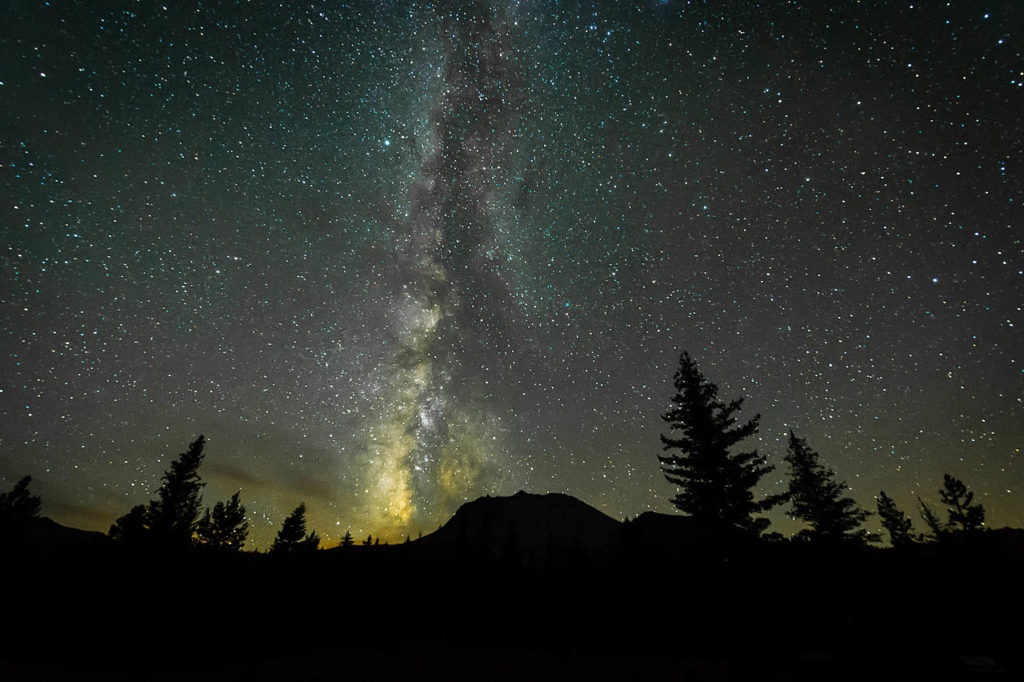Hillsdale professors encourage students to stargaze more. | Wikimedia Commons
Multiple meteor showers will be lighting up Hillsdale skies this fall, according to Timothy Dolch, associate professor of physics.
Dolch said in an email that upcoming astronomical events include the Geminids on Dec.13-14, and the Leonids on Nov. 17-18, one of the best of the fall meteor showers. These can be viewed from locations such as Hayden Park and the Field of Dreams, a local baseball field.
“For the Leonids and the Geminids the moon sets around 8 p.m. and 6 p.m. respectively, so those will be excellent as far as Moon conditions go,” Dolch said.
Associate Professor of English Dwight Lindley said residents of Hillsdale County should take their blinders off and stargaze more.
“I just think a lot of people don’t know what they’re missing,” Lindley said. “There were horses in the 19th century, like Black Beauty, who lived their whole life in town with blinders on. And they don’t know what it’s like to actually run through a field with your blinders off. You’ve not really been fully alive yet.”
Lindley said he encourages all students to stargaze often.
“People have been doing it for many millennia,” Lindley said, “There’s been an organic attachment to the heavens. You know, for as long as humans have memory, they have been stargazing. I think we actually need it and we’re actually walling ourselves off from it right now, technologically, which gets really unhealthy.”
Even though the bright lights of town block some stars, Hillsdale is fortunate to have minimal light pollution.
Hillsdale is ranked a class 5 on the Bortle Dark Sky scale, a metric used by amateur astronomers to judge sky brightness. It ranges from class 1-9, where a class 1 sky has no background sky glow and maximum star visibility and a class 9 sky has maximum background sky glow and no star visibility.
In a class 5 area, artificial light sources are bright enough to make clouds appear brighter than the sky, but the Milky Way is still partially visible.
“With the naked eye, I can see the Milky Way, but not the full range of colors,” said sophomore Charlie Cheng, an amateur astrophotographer.
Using photo editing, short focal-length lenses, and an artistic eye, Cheng has captured stunning photos of the full plane of the Milky Way in places as close as Camp Michindoh, a retreat center not far from Hillsdale.
“Oftentimes when I shoot photos I get a feeling that God didn’t create humans perfect enough to fully appreciate how beautiful they are,” Cheng said. “Because the stars you shoot with a camera, your eyes cannot see something like that. They’re just not good enough.”
Dolch suggests that students interested in stargazing should start by learning some constellation basics, such as the positions of the Big and Little Dippers, the North Star, Orion, and the zodiac constellations.
“Get to know the summer triangle of the stars Vega, Deneb, and Altair,” Dolch said. “Learn the constellations Leo and Perseus so you know where to look for the Leonid in November and Perseid in August meteor showers. Eventually get a good pair of binoculars so you can see the moons of Jupiter and the Andromeda galaxy.”
Lindley said learning to stargaze will foster a love of adventure and beauty.
“When you have a few real experiences that are more than, ‘Oh that’s a pretty star’ or ‘I see the Big Dipper,’ where you’re actually capable of being astonished,” Lindley said, “Once you have a few of those experiences, it whets your appetite to go out and do it again and search for places where you can have access to the stars.”
![]()

